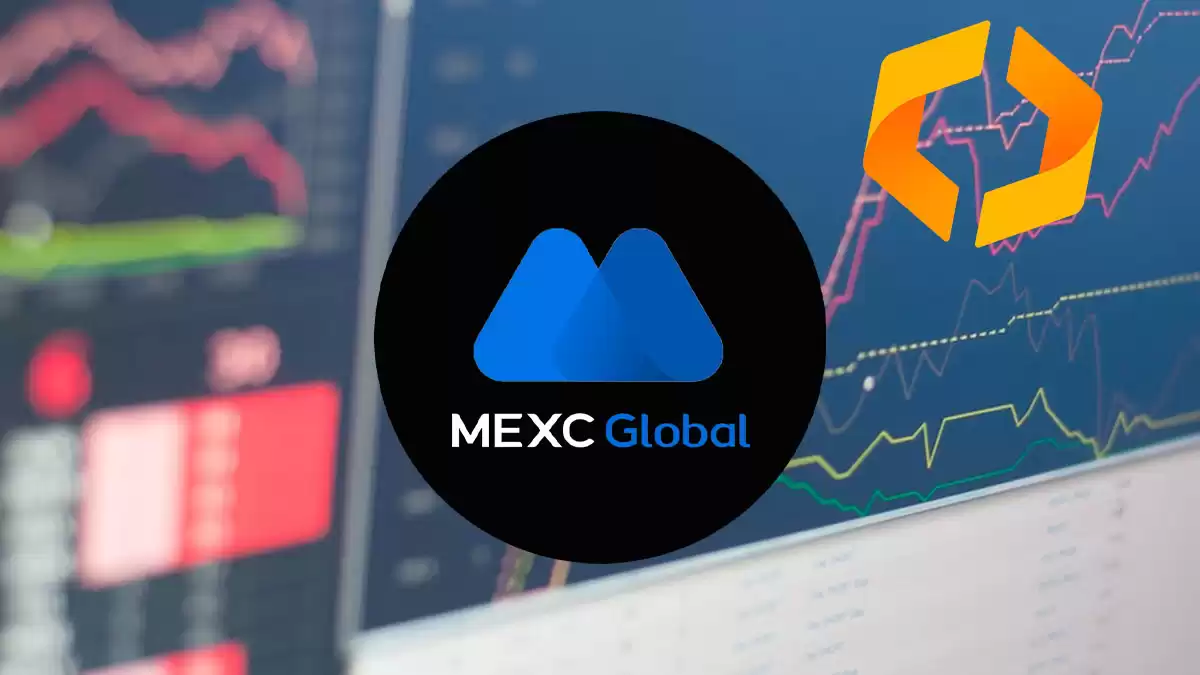-
 bitcoin
bitcoin $122288.232522 USD
0.16% -
 ethereum
ethereum $4480.662914 USD
-0.22% -
 xrp
xrp $2.962747 USD
-2.32% -
 tether
tether $1.000120 USD
-0.05% -
 bnb
bnb $1145.654223 USD
-2.07% -
 solana
solana $227.105217 USD
-1.67% -
 usd-coin
usd-coin $0.999548 USD
-0.02% -
 dogecoin
dogecoin $0.250875 USD
-2.04% -
 tron
tron $0.340654 USD
-0.49% -
 cardano
cardano $0.837968 USD
-2.52% -
 hyperliquid
hyperliquid $48.960449 USD
0.06% -
 chainlink
chainlink $22.049280 USD
-1.33% -
 ethena-usde
ethena-usde $1.000404 USD
0.02% -
 sui
sui $3.586212 USD
0.20% -
 avalanche
avalanche $29.894916 USD
-4.18%
How to make money from MEXC contract trading
Understanding MEXC contract trading equips you to exploit price movements in the cryptocurrency market, empowering you to make informed trading decisions.
Nov 11, 2024 at 09:26 am

How to Make Money from MEXC Contract Trading: A Comprehensive Guide
MEXC contract trading offers traders a unique opportunity to profit from price movements in the cryptocurrency market. By understanding the basics of contract trading and following a systematic approach, traders can increase their chances of success. This detailed guide will provide you with a comprehensive understanding of MEXC contract trading, enabling you to navigate the market effectively and make informed decisions.
Understanding MEXC Contract Trading
- What are MEXC Contracts?
MEXC contracts are financial instruments that allow traders to speculate on the price movements of cryptocurrencies without owning the underlying assets. They are similar to futures contracts, but with some key differences. Unlike futures contracts, MEXC contracts do not have a fixed expiration date and can be held indefinitely. They are also settled in USDT, the stablecoin issued by Tether, which provides traders with greater flexibility and stability.
- Types of MEXC Contracts
MEXC offers two types of contracts: Linear Contracts and Inverse Contracts. Linear contracts are the most straightforward type of contract, with a simple pay-off structure that is directly proportional to the contract's reference index price. Inverse contracts, on the other hand, are more complex and involve a perpetual swap mechanism. The pay-off structure of inverse contracts is based on the funding rate, which is a fluctuating fee paid by traders who hold opposite positions.
- Advantages of MEXC Contract Trading
- High Leverage: MEXC offers leverage of up to 100x on linear contracts and 50x on inverse contracts, allowing traders to control a large amount of capital with a relatively small investment.
- Low Fees: MEXC has competitive trading fees, with a maker fee of 0.02% and a taker fee of 0.04%.
- Deep Liquidity: MEXC's order book is one of the deepest in the industry, ensuring fast execution and low slippage.
- Variety of Trading Instruments: MEXC offers a wide range of trading instruments, including perpetual contracts, futures contracts, and spot trading pairs.
Getting Started with MEXC Contract Trading
- Create a MEXC Account
To start trading contracts on MEXC, you need to create an account. The registration process is straightforward and can be completed in a few minutes. You will need to provide basic personal information and complete the KYC (Know Your Customer) process.
- Fund Your Account
Once your account is created, you need to fund it with USDT. You can deposit USDT directly from your bank account, crypto wallet, or credit card. MEXC supports multiple deposit methods, making it convenient for traders to fund their accounts.
- Choose a Trading Instrument
MEXC offers a wide range of trading instruments, including perpetual contracts, futures contracts, and spot trading pairs. Choose the trading instrument that best suits your trading style and risk tolerance. Perpetual contracts are suitable for short-term trading, while futures contracts are more appropriate for long-term strategies. Spot trading pairs allow you to buy and sell the underlying cryptocurrencies.
Executing a Trade
- Place an Order
To place an order, select the trading instrument and enter the desired price and quantity. You can choose between limit orders, market orders, and stop orders. Limit orders allow you to specify a specific price at which you want to execute your trade, while market orders execute immediately at the current market price. Stop orders are used to enter or exit a trade when the price reaches a predetermined level.
- Manage Your Trade
Once you have placed an order, you need to manage it actively. You can adjust the order price or quantity, cancel the order, or close the position at any time. MEXC provides a user-friendly trading interface that makes it easy to manage your trades.
- Settle Your Position
When you close a position, you need to settle it by paying the settlement value. The settlement
Disclaimer:info@kdj.com
The information provided is not trading advice. kdj.com does not assume any responsibility for any investments made based on the information provided in this article. Cryptocurrencies are highly volatile and it is highly recommended that you invest with caution after thorough research!
If you believe that the content used on this website infringes your copyright, please contact us immediately (info@kdj.com) and we will delete it promptly.
- BlockDAG, DOGE, HYPE Sponsorship: Crypto Trends Shaping 2025
- 2025-10-01 00:25:13
- Deutsche Börse and Circle: A StableCoin Adoption Powerhouse in Europe
- 2025-10-01 00:25:13
- BlockDAG's Presale Buzz: Is It the Crypto to Watch in October 2025?
- 2025-10-01 00:30:13
- Bitcoin, Crypto, and IQ: When Genius Meets Digital Gold?
- 2025-10-01 00:30:13
- Stablecoins, American Innovation, and Wallet Tokens: The Next Frontier
- 2025-10-01 00:35:12
- NBU, Coins, and Crypto in Ukraine: A New Yorker's Take
- 2025-10-01 00:45:14
Related knowledge

Practical parameter settings for a Bitcoin multi-timeframe moving average system
Sep 18,2025 at 10:54pm
Optimizing Timeframe Combinations for Bitcoin Trading1. Selecting appropriate timeframes is crucial when building a multi-timeframe moving average sys...

How can I filter out false breakouts in Dogecoin high-frequency trading?
Sep 22,2025 at 01:00am
Understanding False Breakouts in Dogecoin Trading1. A false breakout occurs when Dogecoin's price appears to move beyond a defined support or resistan...

Techniques for identifying tops and bottoms in the Bitcoin on-chain NVT model
Sep 20,2025 at 07:54pm
Understanding the NVT Model in Bitcoin Analysis1. The Network Value to Transactions (NVT) ratio is often described as the 'P/E ratio' of the cryptocur...

What does the surge in open interest in Bitcoincoin futures mean?
Sep 20,2025 at 11:18pm
Understanding the Surge in Dogecoin Futures Open Interest1. A surge in open interest within Dogecoin futures indicates a growing number of active cont...

How can I use the Ethereum USDT premium to gauge market sentiment?
Sep 18,2025 at 11:55pm
Understanding the Ethereum USDT Premium1. The Ethereum USDT premium refers to the price difference between USDT (Tether) traded on Ethereum-based plat...

What should I do if Ethereum staking yields decline?
Sep 20,2025 at 06:18am
Understanding the Causes Behind Declining Ethereum Staking Yields1. The Ethereum network transitioned to a proof-of-stake consensus mechanism with the...

Practical parameter settings for a Bitcoin multi-timeframe moving average system
Sep 18,2025 at 10:54pm
Optimizing Timeframe Combinations for Bitcoin Trading1. Selecting appropriate timeframes is crucial when building a multi-timeframe moving average sys...

How can I filter out false breakouts in Dogecoin high-frequency trading?
Sep 22,2025 at 01:00am
Understanding False Breakouts in Dogecoin Trading1. A false breakout occurs when Dogecoin's price appears to move beyond a defined support or resistan...

Techniques for identifying tops and bottoms in the Bitcoin on-chain NVT model
Sep 20,2025 at 07:54pm
Understanding the NVT Model in Bitcoin Analysis1. The Network Value to Transactions (NVT) ratio is often described as the 'P/E ratio' of the cryptocur...

What does the surge in open interest in Bitcoincoin futures mean?
Sep 20,2025 at 11:18pm
Understanding the Surge in Dogecoin Futures Open Interest1. A surge in open interest within Dogecoin futures indicates a growing number of active cont...

How can I use the Ethereum USDT premium to gauge market sentiment?
Sep 18,2025 at 11:55pm
Understanding the Ethereum USDT Premium1. The Ethereum USDT premium refers to the price difference between USDT (Tether) traded on Ethereum-based plat...

What should I do if Ethereum staking yields decline?
Sep 20,2025 at 06:18am
Understanding the Causes Behind Declining Ethereum Staking Yields1. The Ethereum network transitioned to a proof-of-stake consensus mechanism with the...
See all articles










































































